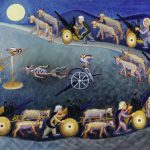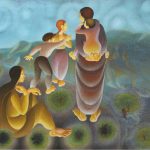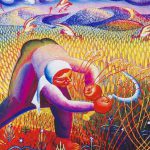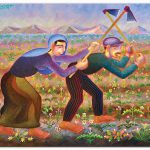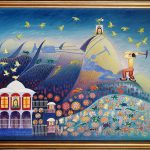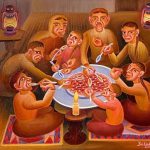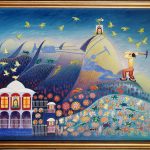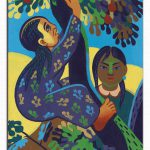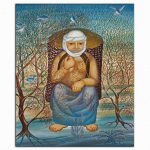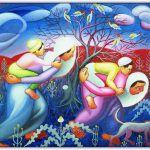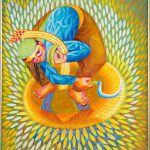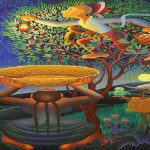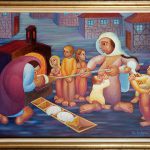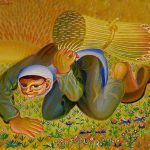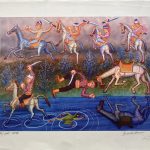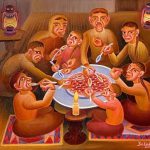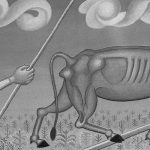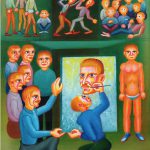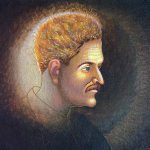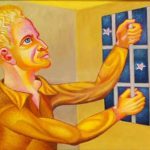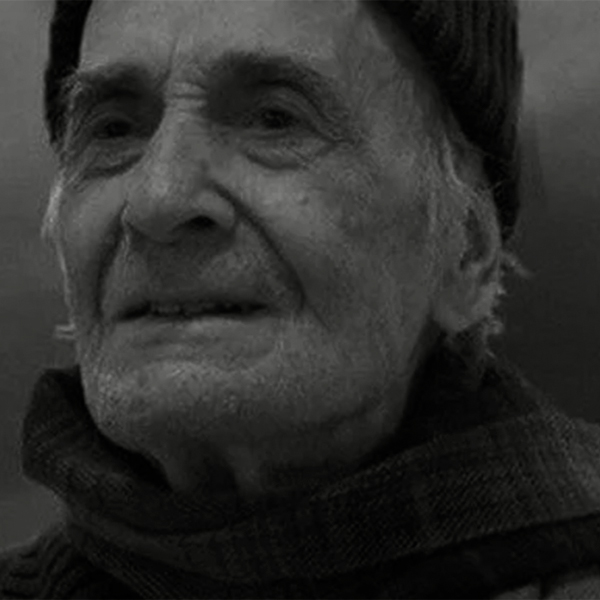
Who is İbrahim Balaban? (1921-2019)
İbrahim Balaban was born in Seçköy, Bursa, in 1921. He went to prison at a young age. Inside, he started painting to console himself. He revealed his talent for painting on his own.
İbrahim Balaban is not only an important representative of peasant realism, expressing the village life and problems of the 1950s, but also one of the important artists of the prominent autodidact / naive artist group of these years.
Balaban met the poet Nazım Hikmet in Bursa Prison. With his support, he improved his painting talent. He gained practical knowledge on philosophy, sociology, and economics and politics. The painter described the years he spent with Nazım Hikmet in his books Şair Baba and Those on the Roof. Balaba also has books called Trace, Trace and Mountain Trial.
“Art is the projection of life. The subject is an essence, every essence creates its own shell.” Balaban, who adopted the theory, opened his first exhibition in 1953 at the French Cultural Center in Istanbul. Balaban, who participated in the exhibition opened in 1961 by the Yeni Dal Group, which was founded in 1959 and adopted an art approach against bourgeois art, was tried for one of his works, but was acquitted. A painting of his published in Gazi Magazine in 1968 was also the reason for his trial. His paintings were attacked at the exhibition he opened in Adana in 1969.
In Balaban’s paintings, which has found its own way and style outside of academic teachings, light and color seem to emerge from the canvas itself. In Balaban’s compositions, which have meticulous workmanship and a different sense of volume, the dull postures of the figures are enlivened by the arabesque line pattern that covers the entire painting.
Balaban, who initially painted paintings about villages and peasant life, later became interested in epics, folk beliefs, heroes and legends; He wrote works on subjects such as migration from village to city, which started in the 1950s, and living conditions in the city. In the last periods of his painting life, he painted Anatolian saints and mothers of fertility. There are many books prepared and compiled about the artist.
Balaban has published memoirs, novels and essays in addition to his painting since the 1960s. He described his days with Nâzım Hikmet, which lasted seven years between 1942-1944 and 1947-1950, in his book Şair Baba and Those on the Roof (1968). There are quotes from this book in the theater play "What Matters is Life" staged at Istanbul City Theaters and in the movie "The Blue-Eyed Giant: Nâzım Hikmet" (Director: Biket İlhan). In addition, the book was turned into a play by author Haldun Çubukçu and staged by director Ayşe Emel Mesci at the Ankara State Theater in 2011.
The artist died on June 9, 2019, at the age of 98, in the hospital where he was treated in Güngören, Istanbul. His body was removed from Şişli Mosque in Istanbul and sent to his hometown, Bursa, and he was buried in Seçköy, Osmangazi district.
